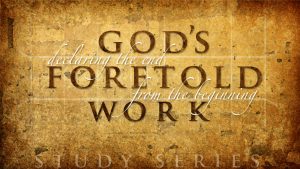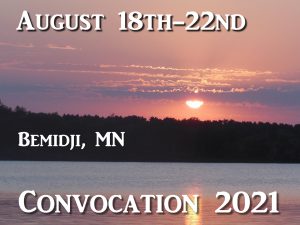Reggie,
The most recent article concerning Jacob’s Trouble was epic. Thanks for it. In that vein, I have a question for you in regards to Antichrist.
I have come to the conclusion (as of now, that is) that Paul’s Man of Sin will emerge from an Islamic/Middle Eastern coalition of nations. AND, I have come to the conclusion that Paul’s Man of Sin is “of the people” (Daniel 9.26) that destroyed the city and the sanctuary in 70 A.D. (Rome) and that he arises out of what Daniel 7 seems to clearly call the Roman Empire, that is, the 4th Beast that covers the earth succeeding Greece but also being destroyed at the Coming of the Lord in the clouds (Dan. 7.14-15).
So here is my question (and it has nothing to do with simply wanting to ‘figure out’ who Antichrist will be – cause we’ll figure it out!): How do we reconcile Daniel 9.26, and chapter 7 with passages that allude to a Middle-Eastern Antichrist? It seems to me that both can be argued from Scripture.
Or in other words:
1. How do you understand the phrase “the people OF THE PRINCE who is to come” in Daniel 9:26.
and
2. How do you understand Daniel 7 in the 4-fold presentation of the successive kingdoms if the rest of Scripture points us to a Islamic Empire NOT a European/Roman Empire?I’m confident that the nations that lead the charge against Israel in the coming years are Islamic and are those that currently surround the Nation/State. Why THOUGH, did the Lord give Daniel information about the Antichrist Empire that seemed to allude to a Roman Empire? Why does the little horn, or Antichrist, come from the 4th successive empire that is clearly Rome?
And why does the “Prince” who makes the “covenant” in the 70th week come from “the people” of Rome who “destroy the city and the sanctuary” of Jerusalem if He is also quite friendly with Middle Eastern nations (Ezekiel 38:1-6, Psalm 83, {Daniel 11.36-45?}) also to be identified as “an Assyrian” (Is. 10:24; 31:8; 52:4; Mic. 5:5-6)? Is it one or the other? Is it possible for it to be both and? etc? etc?
I’d love to hear what you think as I’m struggling to make the connection.
Blessings,
These are very good questions and deserve more than the quick answer I must limit myself to now. Much of the difficulty you describe can be reconciled if we understand that “the people of the prince that shall come” are not the Romans, but the contemporary people of the Antichrist (Dan 11:21-45; Ezek 38:17). I don’t put the gap of two thousand years between the people and the prince that some do. I do, however, recognize a gap and double fulfillment, but this doesn’t require that the people of the prince be Roman, so that the Antichrist must be traced to some Roman descent, simply because the Romans destroyed ‘the city and the sancturary’. Why? Simply because the Romans are not the last people to destroy the city and the sanctuary. Yes, the ‘prince that shall come’ is indeed the ‘little horn’ that comes out of the fourth beast of Dan 7. But the same ‘litte horn’ (and I must insist that he is indeed the same on solid exegetical evidence) comes “no less” out of a division of the third kingdom (see Dan 8:9). So I think it is a mistake to overly emphasize the ‘territorial’ aspects of the successive beast kingdoms, but to see rather the more generic, ‘organic’ nature of their relation. Notice that the kingdoms are not represented as ceasing to exist, but each lives on in its successor, so that at the end, all are destroyed at once as all existing at once. That’s what the language of the passages seem to represent. The kingdoms are viewed as unit, the beast-like kingdom of man. They are distinguished and identified according to their impingement on fate and fortunes of Israel as usurpers of the theocratic kingdom of David (Dan 2:44). I see them in a more ‘organic’ relation to the doctrine of the principalities and powers in chapter ten, the real ‘powers’ behind the kingdoms of this present evil age, and their defeat as the real issue of Israel’s restoration. But even on territorial grounds, Rome certainly included most of the eastern Arab lands that could produce a figure that could marshal the Islamic world against Israel. So I see Titus and the 70AD destruction of the temple and city as only a pre-typical fulfillment of a yet future destruction of city and sanctuary by the actual contemporary people of the Antichrist. See what I mean?
The abomination of desolation that starts the tribulation is certainly yet future, requiring a restored ‘holy place’ located in the ‘sanctuary’ in Judea (Mt 24:16) and is thus not merely figurative of the church etc. I see the necessity of a restored sacrifice on the basis of Dan 9:27; 11:31, and most significantly Dan 12:11 in manifest connection with the resurrection and deliverance of Israel as shown in Dan 12:1-2 and verse Dan 12:13. So when Paul mentions the ‘man of sin’ as sitting in the temple, he manifestly has Daniel’s ‘willful king’ of Dan 11:36 in mind, who manifestly has placed the ‘abomination of desolation’ in the holy place just four verses earlier (Dan 11:31), and this, according to Dan 12:11 entails the necessity of something answering to a sacrifice. Clearly this is the event that Jesus said starts the tribulation and ends in His return (Mt 24:15-29). So how folks can imagine that Paul had some other kind of temple in mind is beyond me, and I’ve not been impressed by the arguments to the contrary of what seems to me obvious and incontrovertible. You just can’t divide all that up on dogmatic grounds. The relationships of these events are too inter-dependent and integrated to avoid their inseparable relationship. It all stands or falls together. What is ultimately at stake is not the inconvenience of an interpretation, but the issue of unbelief in God’s ability to fulfill His word to the jot and the tittle. I love in Matthew’s gospel, the repeated phrase “this or that happened in order to fulfill that which stood written.”
One more thing; because the Antichrist is pre-typified by such names as the Assyrian and the Chaldean, it seems important to note that he is just as well typified by the Syrian, Antiochus IV. So I’m not sure if we should try to use these names of early prototypes of the ultimate Antichrist as to sure a guide to locate the region of his rise. Rather, it appears that his rise is subsequent to the other ten, since the scripture says he comes up AFTER them. He begins in obscurity, possible a “Johnny come lately” to the region. He “comes up and becomes strong through a small people”. However, he continues his ascent until, through stealth, he comes into “the greatness of the whole kingdom.” The only clear passage indicating geography is Dan 8:9. If the ‘little horn’ of Dan ch 8 is more than a type, but in fact, as I believe, the coming prince, then he comes out of one of the fourfold divisions of Alexander’s empire, but this must exclude Egypt, since it says he waxes to the south, the east, and towards the ‘pleasent land’. Obviously a north to south movement, showing that his power base is to the north of Israel. So still, this leaves considerable latitude for any effort to use scripture to pin point the nation that gives rise to the Antichrist. But if one is inclined to make Antiochus IV the ultimate prototype, then Syria would be the best choice, and it does appear that the break that one must posit at some point in Dan 11 between antiquity and eschatology seems best placed between verses 20 and 21, precisely where Antiochus III is succeeded by his son who fulfills some, but certainly not many important details of the passages that follow, giving a kind of ‘phasing out’ effect, making room for a future fulfillment that will carry through to the appointed end and the resurrection. I’ll come back to your questions asap. But that’s my answer to part of it.
In His awesome grace, reggie




